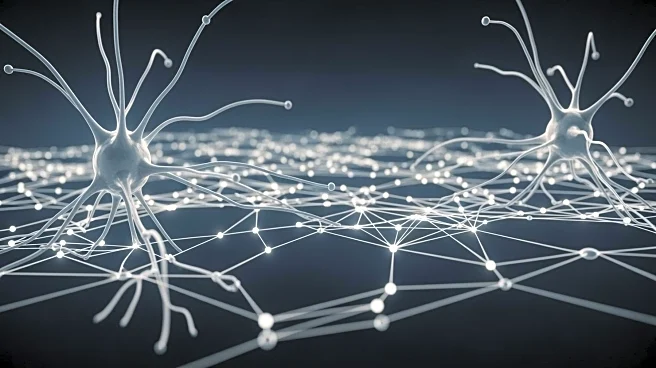What's Happening?
Researchers from the University of British Columbia have discovered that purposeful hand gestures can significantly enhance a speaker's persuasiveness and perceived competence. The study, led by professor
Mi Zhou, focused on analyzing hand movements in communication, marking the first large-scale examination of this kind. Using AI and automated video analysis, the team evaluated over 200,000 hand gestures from 2,184 TED Talks, correlating them with audience engagement metrics such as social media 'likes'. The study identified 'illustrator' gestures, which visually depict spoken content, as particularly effective in making speakers appear more knowledgeable and improving audience understanding. In contrast, 'highlighter' gestures and random movements showed little impact. The research highlights the dual-mode delivery of information—visual and verbal—as a key factor in enhancing communication effectiveness.
Why It's Important?
This research has significant implications for various fields, including marketing, education, and public speaking, where effective communication is crucial. By understanding the impact of hand gestures, professionals can enhance their persuasive abilities, potentially leading to better engagement and outcomes in their respective domains. The findings suggest that even with identical content, the manner of delivery can greatly influence audience perception and engagement. This insight could lead to new training methods for speakers and educators, emphasizing the strategic use of gestures to complement verbal communication. Additionally, the study underscores the growing role of AI in analyzing and improving human communication, offering new tools for understanding and optimizing interpersonal interactions.
What's Next?
The study opens avenues for further research into the nuances of non-verbal communication and its impact on persuasion. Future studies could explore the cultural variations in gesture interpretation and their effects on communication across different demographics. Additionally, the integration of AI in communication analysis could expand to other non-verbal cues, such as facial expressions and body language, providing a more comprehensive understanding of effective communication strategies. As the findings gain traction, industries reliant on persuasive communication may adopt training programs that incorporate these insights, potentially reshaping how professionals approach public speaking and presentations.
Beyond the Headlines
The research highlights an often-overlooked aspect of communication—non-verbal cues—and their profound impact on audience perception. This could lead to a broader recognition of the importance of body language in effective communication, challenging traditional views that prioritize verbal content. The study also raises ethical considerations regarding the use of AI in analyzing human behavior, prompting discussions on privacy and the potential for AI to influence human interactions. As AI continues to evolve, its role in enhancing or manipulating communication will likely become a topic of significant debate.











